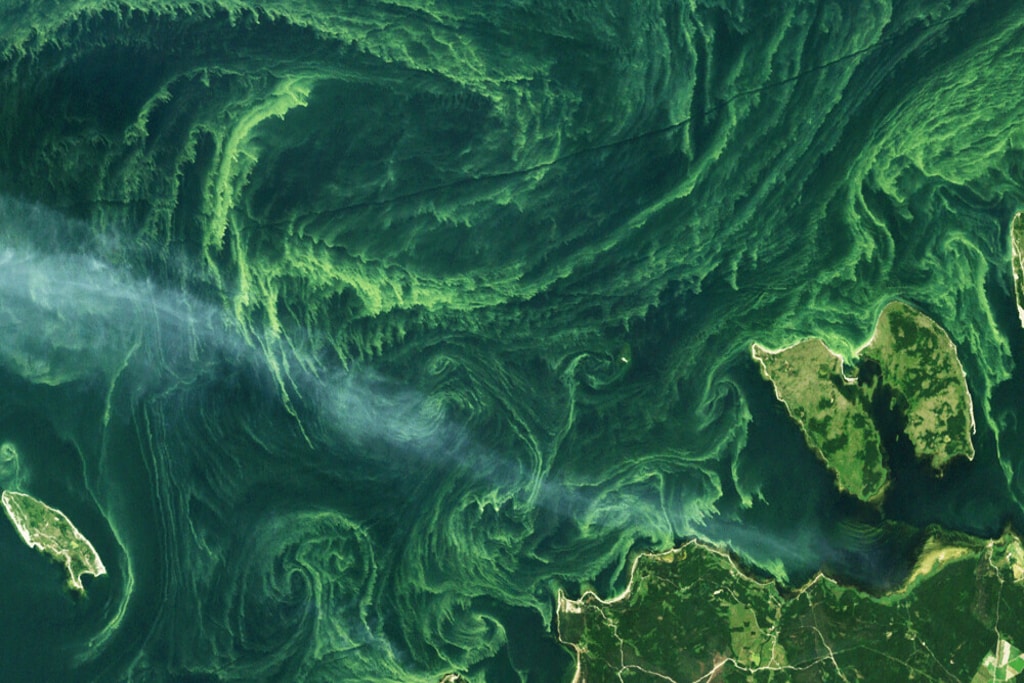Algae blooms are causing ‘green snow’ along the coastlines of Antarctica and are likely to spread as temperatures rise, according to a study that has created the first large-scale map of the organisms and their movements.
—
What is green snow?
The study, published in the Nature Communications journal, used European Space Agency satellite data gathered between 2017 and 2019 as well as on-the-ground observations over two summers in Antarctica’s Ryder Bay, Adelaide Island, the Fildes Peninsula and King George Island, which allowed scientists to map the microscopic algae as they spread across the snow of the Antarctic Peninsula, forming ‘green snow’.
The data reported is a conservative estimate since it only included green algae. The satellite is only capable of picking up green, which means the data ignored the red and orange algae that accompany it.
Scientists identified 1 679 separate blooms of green algae on the snow surface, covering an area of 1.9 sq km, equating to a carbon sink of around 479 tons per year. Patches of green snow algae can be found along the coastlines of Antarctica, usually in ‘warmer’ areas, where average temperatures are a little above zero degrees Celsius during the Southern Hemisphere’s summer months of November to February.
Warming temperatures could create environments more favourable for the algae, which need slushy, wet snow to thrive.
Dr Andrew Gray, lead author of the paper, and a researcher at the University of Cambridge, says, “As Antarctica warms, we predict the overall mass of snow algae will increase, as the spread to higher ground will significantly outweigh the loss of small island patches of algae.”
You might also like: How ‘Carbon Smart’ Farming Could be the Key to Mitigating the Climate Crisis

Dr Gray added that while an increase in snow melt could lead to more algae growing, the distribution of the organisms is heavily linked to bird populations, whose excrement acts as a fertiliser to encourage growth. He says, “As bird- particularly penguin- populations are affected by warming temperatures, the snow algae could lose sources of nutrients to grow.” Over 60% of blooms were found near penguin colonies and others were found near birds’ nesting sites.
Dr Gray says that an increase in the blooms could also lead to further snow melt. “It’s very dark- a green snow algal bloom will reflect about 80% of the light hitting it, so it will increase the rate of snow melt in a localised area,” he says.
Researchers found that almost two-thirds of the bloom were on small, low-lying islands. The researchers say that as the region warms due to the climate crisis, these islands could lose their summer snow cover and algae- although in terms of mass, the majority of snow algae is found in areas where they can spread to higher ground when snow melts.
The Antarctic Peninsula is the part of the region that has experienced the most rapid warming in the latter part of the last century, the researchers say.
The region experienced an unprecedented heatwave in the beginning of the year- on February 9, a research station recorded a temperature of 20.75°C, the continent’s first time to exceed 20°C in recorded history.
The algal blooms in Antarctica are equivalent to about the amount of carbon that’s being omitted by 875 000 average UK petrol car journeys. Matthew Davey, one of the researchers of the study says, “That seems a lot but in terms of the global carbon budget, it’s insignificant. It does take up carbon from the atmosphere but it won’t make any serious dent in the amount of carbon dioxide being put in the atmosphere at the moment.”

















